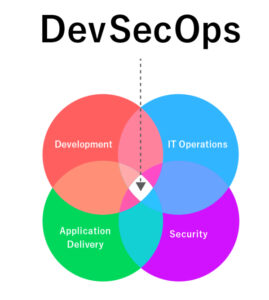A DevSecOps (Development Security Operations) profile refers to an approach that integrates security practices within all phases of software development lifecycle, aiming to build more secure applications from the ground up. This methodology emphasizes collaboration between development, operations, and security teams with a shared goal of enabling continuous delivery while reducing risks associated with vulnerabilities or breaches.
The core principles of a DevSecOps profile involve:
- Shared Responsibility: Security becomes everyone’s job, where developers, operations teams, and security personnel work together throughout the software development lifecycle to ensure secure code deployment and infrastructure management. This collaborative approach leads to improved communication, faster identification, and mitigation of potential vulnerabilities or weaknesses in applications and systems.
- Automation: DevSecOps places a significant emphasis on automating security processes as much as possible. Integrated tools, such as container orchestration systems like Kubernetes, application monitoring and testing frameworks (Static Application Security Testing – SAST, Dynamic Application Security Testing – DAST), vulnerability scanners, and configuration management tools help enforce secure development practices efficiently and consistently.
- DevSecOps Culture: Establishing a strong DevSecOps culture means building awareness of security as an integral part of the entire software development process among all team members. Regular training, workshops, and open communication channels encourage cross-departmental collaboration to ensure that everyone is working towards secure software delivery goals.
- Continuous Integration/Continuous Deployment (CI/CD): DevSecOps involves the use of CI/CD pipelines with integrated security checks at various stages in the development process, including code review, testing, and deployment. This ensures that any potential vulnerabilities or issues are detected early on, minimizing risks to applications and infrastructure while providing fast feedback for developers to make necessary improvements.
- DevSecOps Tools: To support a DevSecOps profile, teams should use specific tools designed to facilitate collaboration among different stakeholders. These may include secure code repositories (e.g., Git), containerization systems, infrastructure-as-code platforms, and integrated security solutions that provide visibility into the application’s security posture throughout its lifecycle.
- Compliance: DevSecOps approaches must ensure adherence to relevant regulatory standards or frameworks such as ISO 27001/27002, NIST Cybersecurity Framework, and industry-specific guidelines like PCI DSS (Payment Card Industry Data Security Standard) or HIPAA (Health Insurance Portability and Accountability Act).
So, a DevSecOps profile is an approach to software development that prioritizes security at every stage of the process. By promoting collaboration between different teams and automating security checks within CI/CD pipelines, organizations can deliver secure applications more effectively while reducing risks associated with cyber threats or vulnerabilities.
Note: content under revision

